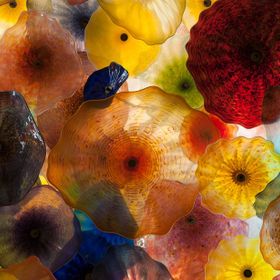

moniqueelferink
FollowClown fish, Wakatobi (Indonesia, Sulawesi)
Clown fish, Wakatobi (Indonesia, Sulawesi)
Read less
Read less
Views
878
Likes
Awards
Winner in Under Water Wonders Photo Challenge
Winner in Life under the sea Photo Challenge
Top Choice
Absolute Masterpiece
Superb Composition
Peer Award
All Star
Outstanding Creativity
Jaw Dropping
Exceptional Contrast
Great Find
Superior Skill
Top Ranks
Categories
 PRO+
PRO+
FeatherstonePhotography
March 25, 2016
Congratulations on your win - I voted for this image! This reminds me of The Little Mermaid by Disney - very cute!!

 PRO
PRO
beckyreding
March 24, 2017
AUTOMATIC SMILE MAKER! LOOKS LIKE HE'S SAYING " DON'T TAKE JUST ONE PHOTO OF ME" !! HAHA!!
Same photographer See allBehind The Lens
Discover more photos See all
Behind The Lens
Location
This photo was taken during a dive trip to Wakatobi. Wakatobi is a small archipelago of Islands close to Sulawesi in Indonesia. It is a pristine area, with the most amazing corals. There is only 1 dive resort in the area, which does it's utmost to minimize the impact on the environment, and strives to let the local community profit from the resort.Time
This photo was taken on the third dive of the day, in the afternoon. Normally at dive resorts there are three dives during the day, 2 in the morning, 1 in the afternoon. In some cases there are night dives organized, but this one was taken during a day-dive.Lighting
For this photo 1 flash was used, which was positioned to left and slightly above the camera. The positioning of an underwater flash is a bit tricky. When the flash is not positioned correctly, the light will reflect against particles in the water. This backscatter will appear as white dots on the picture..Equipment
For camera I have a Nikon D300 in a Hugyfot underwaterhousing, with an Inon Z240 underwater strobe. As Wakatobi is famous for it's macro life, I used my 60 mm macro lens on many dives, including this one. It is obvious that a tripod was not used, as the underwater environment and corals are very sensitive and should not be touched.Inspiration
When I found this little guy I was struck by the amazin combination of the colors of the anemone and the clown fish. Usually clown fish are a bit skittish. They move about very quickly, rubbing themselves against the anenome, totally disappearing in it, and then coming out again to have a quick look at the person with the big camera blowing bubbles. The best way to do this is be patient and wait for the right moment. Position yourself as low as you can get without damiging the coral. Usally after some time the fish gets a little less nervous and take some more time looking a the diver. At the moment when you have great eye contact, press the shutter. I was extremely lucking that the clown flish showed this "smile".Editing
On this photo very little post processing was done. There was almost no back scatter.In my camera bag
The D300 in my Hugufot housing, with 2 underwater Inon Z240 flashes. Apart from the 60 mm macro, I also bring a 10-24 wide angle to shoot the corals and sea scapes. For diving this wide angle is a very nice lens, due to the fact that it is possible to get very close to a subject. Underwater the light travels about 1-2 meters total, out of the flash and back again into the camera. So this means that if your subject is too far away, you loose all the red colors first, than the yellows, leaving you with a totally blue picture. 50 cm to 1 meter maximum of the subject is best, this gives the colorfull underwater pictures that most people like to see. It does not help to have a stronger flash, light does not tavel further underwater if the flash is stronger.Feedback
First of course, anybody who wants to try this, needs to learn how to dive and practice buoancy. It is important that you take care of the environment. For the rest get as low as you can. Many underwater photo's are taken in a downward position, because this is the logical position of your head when you are diving. This is the first habit you need to get rid of, try to get at the same hight as your subject. This means that subjects on rocks, ridges, etc. are in a good position to get on the same level. Where your subject is, is more important than what it is. It is impossible to get a good photo of a subject in an impossible or ugly position. Know something about the behaviour, clown fishes live in anemones, they will never leave it: so wait with your camera ready! Patience, patience, pateince, wait for the right moment, and avoid taking photo's of fishes swimming away from your, tails, and backs are not very interesting. Press the shutter at exactly the right moment in the split second the fish is looking at you, preferably with both eyes! Try again if you dit not get what you had in mind.











































